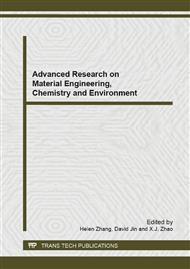p.679
p.685
p.689
p.695
p.701
p.705
p.709
p.719
p.723
The Petrophysical Study for Shale Sample Based on Autoscan-II Platform
Abstract:
Petrophysical study is playing an important role in oil and gas exploration. Shale gas and shale oil is blooming in recent years in many countries. Less rock physics knowledge is known about shale relatively to other rock type such as sandstone and limestone. In this paper, we carried out a rock physical study of shale core sample which is drilled from north China. The plan distribution of permeability, P wave velocity, S wave velocity and complex resistivity were acquired based on AutoScan-IIplatform. The results show that the permeability of the shale sample is basically low with values of 0.1 to several micro Darcy (mD) except some fracture areas in the surface, which has values of about several tens mD. The permeability can basically describe the distribution of the fracture. The complex resistivity has the similar characteristics with permeability, which is also roughly corresponding to the position of the facture. As for the Vp and Vs, although not very good correspondence with the surface, they are still approximately present the high and low velocity feature of the core sample as well. This result is significantly helpful for shale gas exploration and production.
Info:
Periodical:
Pages:
701-704
Citation:
Online since:
September 2013
Authors:
Keywords:
Price:
Сopyright:
© 2013 Trans Tech Publications Ltd. All Rights Reserved
Share:
Citation:


